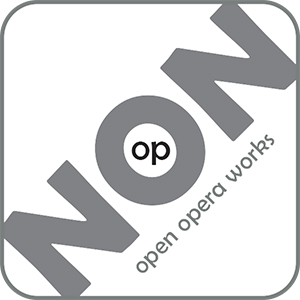THUNDER, PERFECT MIND is a site-specific, immersive, opera installation that takes place in a large vertical space—such as an atrium or lobby—of a large building. It brings the audience along on a narrative meditation on navigating the unknown. It is about finding one’s place amid the confusion of the material world, and about discovering and following an individual path. Rooted in creation stories, Gnostic cosmologies and the myth of Sophia, THUNDER opens with Sophia and the audience immersed in a field of unintelligible vocalizations – the glossolalia of infants, the ramblings of schizophrenics, and the sounds of ecstatic religious experience. This is how the journey begins: in an unknown world in which the audience, in parallel with Sophia (Marcy Richardson) and later with Eve (Harrah Friedlander), seeks to discover their agency, their voice, their relationship to the whole.
THUNDER is divided into four sections: ACT 1 – from beginningless time, ACT 2 – through as many deaths as she passes spheres descends to what on earth is called life, ACT 3 – i wandered through worlds and generations, and ACT 4 – the backward glance. ACT 1 follows the structure of an Indonesian creation myth, a timeless dance in which dancers and soprano emerge out of nothingness. The narrative is woven together with set, music, soundscape, visual design, and performance, creating a unified whole. In ACTS 2 – ACT 4 narrative and performance begin to fragment and disperse. During these acts, which present the myth of Sophia/Eve through the lens of Gnostic cosmology, spectators may position themselves how they wish or roam from place to place. Together, character and audience get lost in the labyrinthine installation as the now-dispersed narrative is expressed scene by scene: each a narrative node.
In one location, music is performed on 13 long tuned wires fitted with resonators. Further into the installation, musicians are nestled into pockets of the physical set, playing a graphic score on hand-built Foley instruments ranging from bull roarers to whirly tubes to amplified wooden “thunder” boxes. In another location, 8 dancers perform a score that abstracts the physical storytelling structures and movement signatures in classical Indonesian dance into a slow-traveling choreography that leads the audience out of the labyrinth and into the final scenes.
As the audience navigates the piece, sometimes they are with Sophia, sometimes they are with Eve, seeing the narrative nodes through her eyes as she sees and thinks aloud. Elsewhere, the audience is left alone with the performers or installation elements – effectively taking on the role of Sophia/Eve themselves.
THUNDER, PERFECT MIND is performed by two sopranos, twelve-part vocal ensemble, six percussionists, concert and improvising musicians, and movement ensemble. Sonic, visual and physical installation elements include two sets of 13 tuned long wires, hand-built Foley and percussion instruments, fixed audio, lighting design, video projections, and sculpted and found-object theatrical settings.
A modular construction, the musical score and all aspects of THUNDER, i.e., movement, video, visual elements, sound/visual installations are created as “prefabricated” units and integrated into the final THUNDER score and production. This allows each of the co-creators to work independently, and it means that individual elements, scenes, and acts may be presented separately as concert versions or installations.
The lead design team for THUNDER includes: Christopher Preissing, composer and project director; Deirdre Harrison, dramaturge and co-director; Jay Strommen, visual designer; Carmen-Helena Téllez, conductor; Kristina Isabelle, choreographer; Marcy Richardson and Harrah Friedlander, sopranos; and members of Chartreuse string trio, The Floating Opera Company and the Mocrep ensemble.

